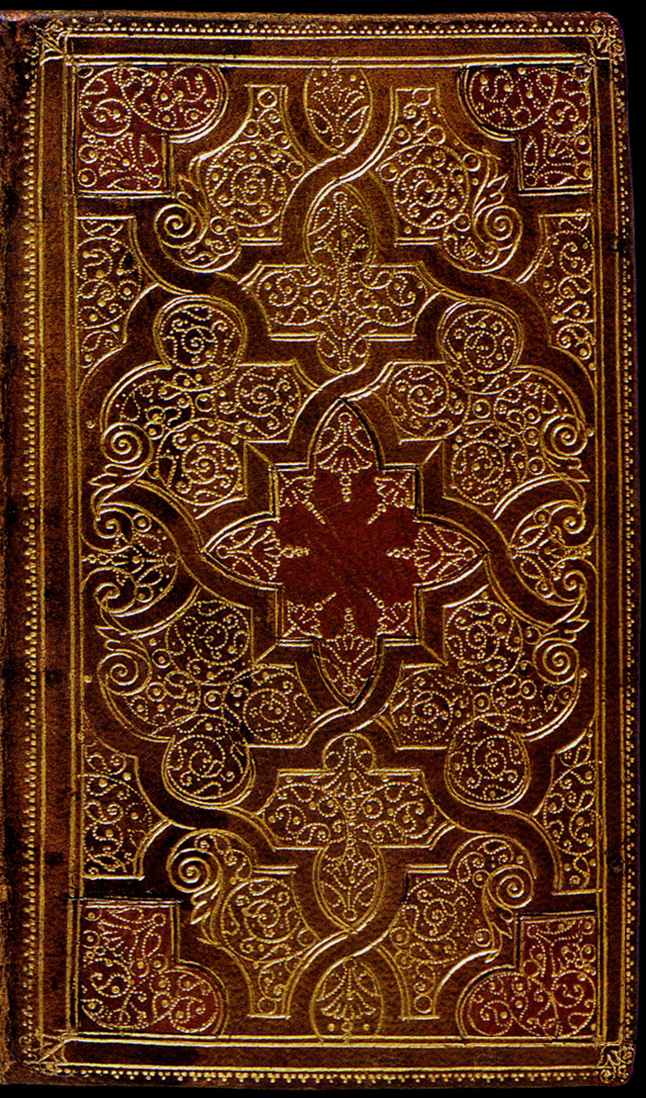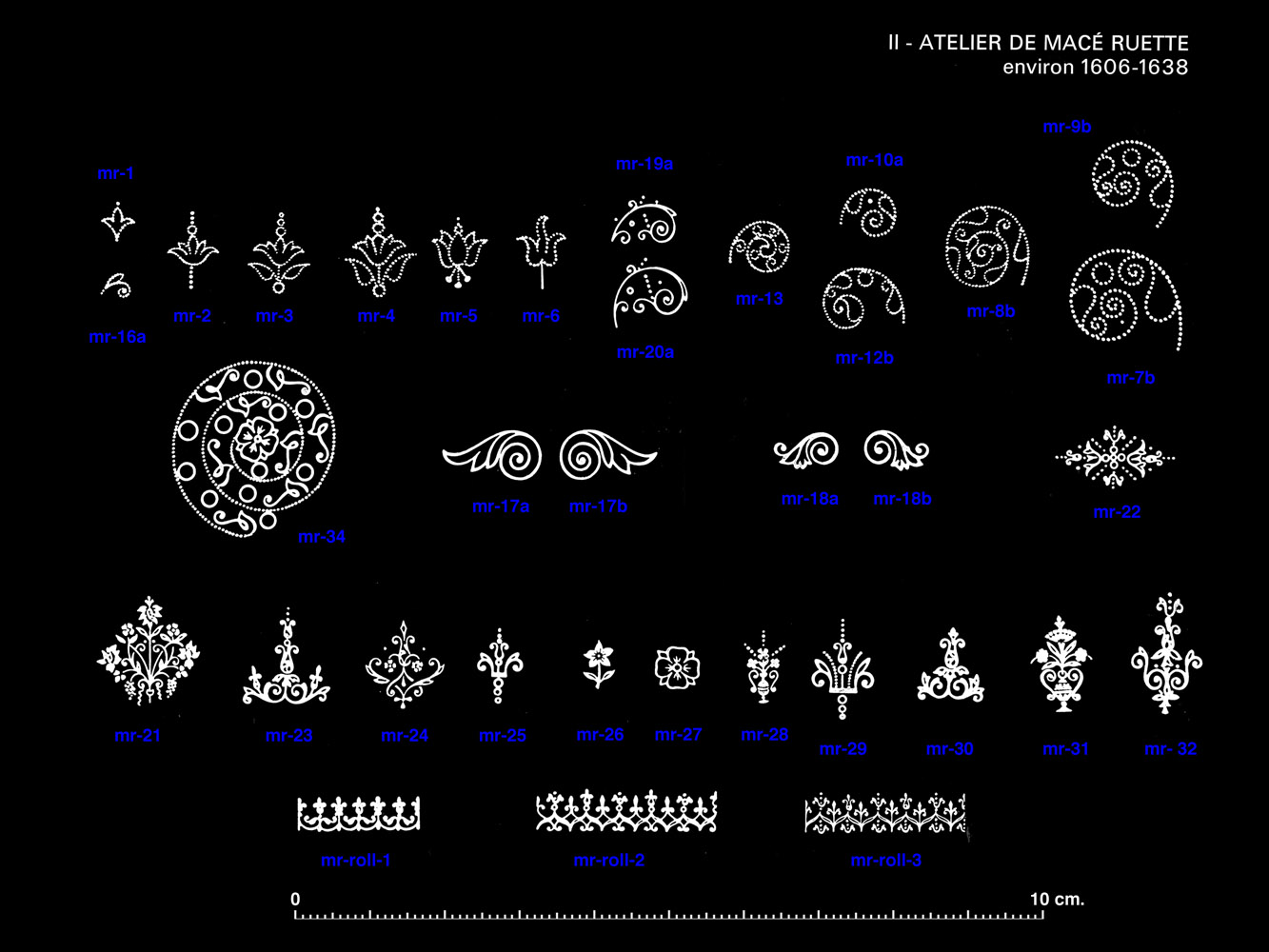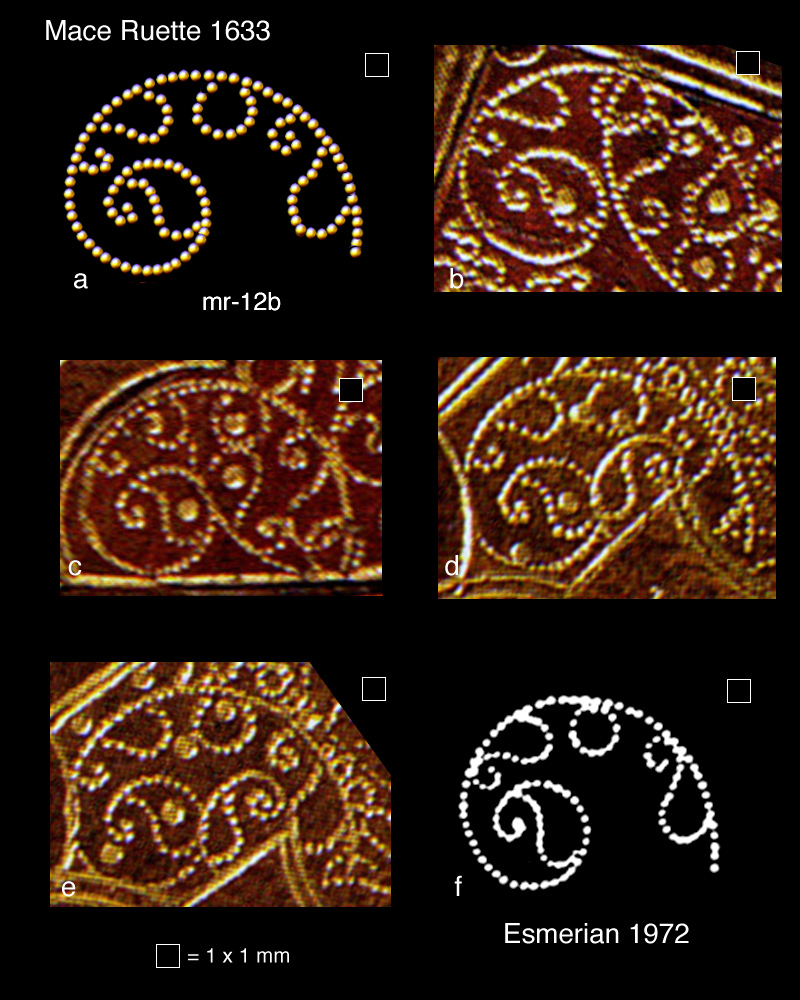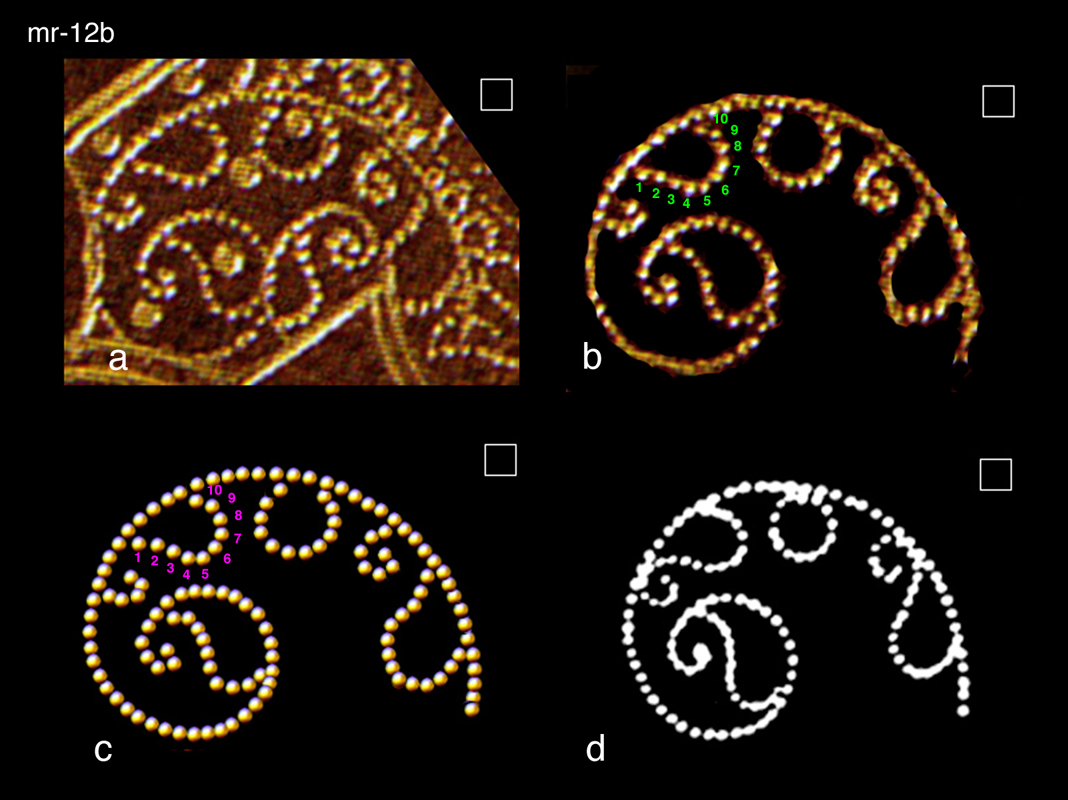

|
On the previous page we have been examining the imprints found on the binding reproduced above, the original photograph of this binding is found in a Ader Tajan auction catalogue (Paris 4 juin, 1993, item #12), (click on the image to see an enlargement). This decorative binding covers a Bible published in 1633. The binding has been attributed to the Atelier of Macé Ruette. We need to pause here and look at the work of one of the greatest experts in the field of French decorative bookbindings and particularly those of Macé Ruette, Raphaël Esmerian (1903-1976). I have searched the internet for information about him and found little, there is nothing in the Wikipedia. The only good source of detailed information comes from a page from the web site of Grolier Club (http://www.grolierclub.org/) entitled Guide to the Raphaël Esmerian Papers |
|
Raphaël Esmerian Papers, 1891-1981 (bulk 1944-1973) Biographical Note: Raphaël Esmerian was a Frenchman of Armenian descent, born in 1903 in Paris. After two years at Cambridge, Esmerian returned to Paris to apprentice to his father's lapidary business. He then moved on to gem dealing, which became his primary career (Raphaël entered the business in 1919 and began pioneering the cutting and trading of colored gems as we know it and became a leading gem dealer in Europe and began traveling to New York to supply stones for Cartier). After a brief stint in the French Army in 1939, he and his wife fled occupied France in 1940 to Portugal, and eventually made their way to New York City in the fall of that year. Esmerian began collecting rare books at the age of 15, and by the 1950s had amassed what has been called the "single most important collection of French bookbindings in the United States." Esmerian's collection was chief among those featured in a 1957 History of Bookbinding Exhibition at the Walters Art Gallery in Baltimore. Esmerian followed that exhibition with Bookbinding Styles During the Renaissance in France, from the Collection of Raphaël Esmerian, an exhibition held at The Grolier Club, where he was a member, in 1966. In 1972, Esmerian produced a five volume sale catalogue of his library, Biblioth¸que Raphaël Esmerian, notable as a fine reference work on the books in his collection and included in the Library holdings of The Grolier Club. His collection was sold at auction using the catalogue he wrote in Paris over a decade in the 1970s. Raphaël Esmerian passed away in 1976. |
|
There is no real mention here of Esmerian's expertise in bookbindings however with the publication of his 1972 Catalogue, Volume 2 part 2 Douze tableaux synoptiques sur la reliure au XVIIe si¸cle. he established himself as leading expert in the field of imprint research. He was the first to present an orderly collection of the imprints of the more important French Bookbinders of the 17th century, as well as an index listing all the known examples for each binder. This important reference has never been equaled. In Volume 2 of his catalogue, we find on page 9 a chapter entitled ATELIER MACÉ RUETTE, roughly translating the introdutory page, we learn that Macé Ruette (1584-1644) began his apprenticeship as a binder in 1598 chez Dominique Salis. In 1606 he opened his own workshop; and from 1629 to 1634 he was administrator of the guild of booksellers, printers and bookbinders (Confrérie des libraires imprimeurs et relieurs). Upon the death of the Royal binder Clovis Eve, in 1634 he succeeded Eve as Relieur du Roi, this position passed on to his son Antoine Ruette after his death in 1644. His activity seemed to diminish after 1638, only editing a few books on religion (volumes de saintete) and opening his own book store on Saint-Jean-de-Latran Road near Saint-Benoît fountain. Up to 1620 the designs of his bindings were limited to the conventional models of his times (fanfares, losange ét écoinçons et encadrements a la Duseuil). It was a little after 1620 that the young Hubert de Montmort (1600-1679) started collecting freshly printed books (Elzéviers) and took them to Ruette to have them bound. Esmerian states that he studied 35 of these bindings dating from 1620 to 1634, and noticed certain changes in the tools that Ruette used. By observing the printing dates of the books Esmerian was able to trace the chronlogical changes in Ruettes choice of tools and style. From 1620 to 1630 the fleuron used for the interior frame was a small vase of flowers, after 1630 it was replaced by a larger imprint (fer a gerbes). Changes also in the roulettes used inside the covers were observed, one was replace in 1629 that then lasted till 1634 while a third one appeared in 1633. The choice of leather also changed from a rough red moroquin to a better quality and color from 1625-1626. Esmerian notes that within these bindings we find the first experimentation with pointille tools, timid at first in the format which Esmerian terms a gerbes a format which he notes later becomming more elaborate and important, in fact primordial in the reliure of the next 50 years. "The bindings of Ruette are of many different styles, in general he excelled in the smaller formats rather than the folios, especially when mixing the standard solid tools with pointillés and branchages. However the style in which he proved himself to be very original is that of losange-écoinçons" I have already discussed this on another page (see this page) and present examples from Esmerian's catalogue, the reason I am mentioning it here again is to point out and reaffirm that Esmerian knew the tools of Mace Ruette intimately, therefore I am presenting here further examples of the tools which Esmerian singled out as belonging specifically to Mace Ruette. |

| In Comparative Diagram 1, I present the Mace Ruette imprint models published by Raphaël Esmerian in 1972. Esmerian presented his models as a collection without giving any of the imprints a specific number. To assist us in our research I have added numbers (in blue). |

| On the previous page we have discussed the importance of bead models as type models, in Comparative Diagram 2, you see that I have constructed a bead model (a) from the imprints (b, c, d, e) using the various clean parts from each to get an accurate type model. |

| In Comparative Diagram 3, I show a mr-12b imprint extracted from the item #12 binding (a), next to it I show what it looks like without all the other surounding and or overlaying imprints (b). These then are compared to a new bead model, with a bead count showing that the model is very accurate (c) and next to it Esmerian's type model for this imprint (d). we can see that even without counting the beads it does not copy the original imprint very well. This is understandable given that these imprints are rarely seen unencombered and or clearly visible. (click on this diagram to see a 1200 dpi enlargement). We must remember too that in 1972 there was no such thing as a personal home computer, high resolution desktop scanners, and multimegapixel digital cameras that are now household items. Today with our technological edge we can carry the imprint research of Esmerian to the next level, 1200 dpi images! |
|
See the next page L'Atelier de Macé et Antoine Ruette |
| information about the author | return to the home page of VIRTUAL BOOKBINDING |